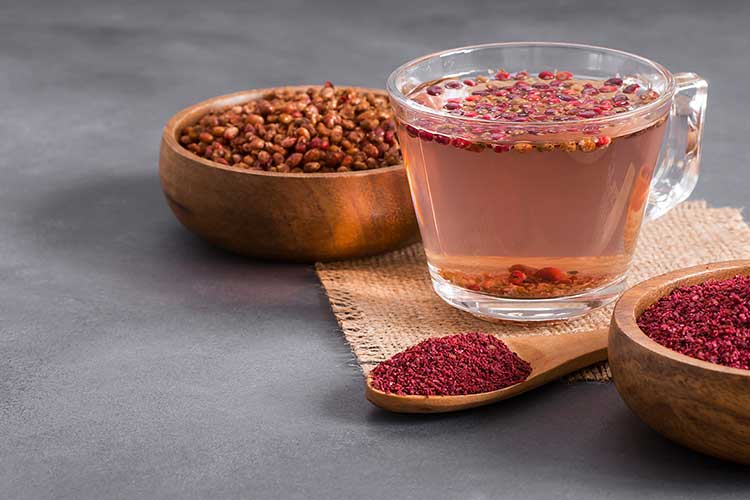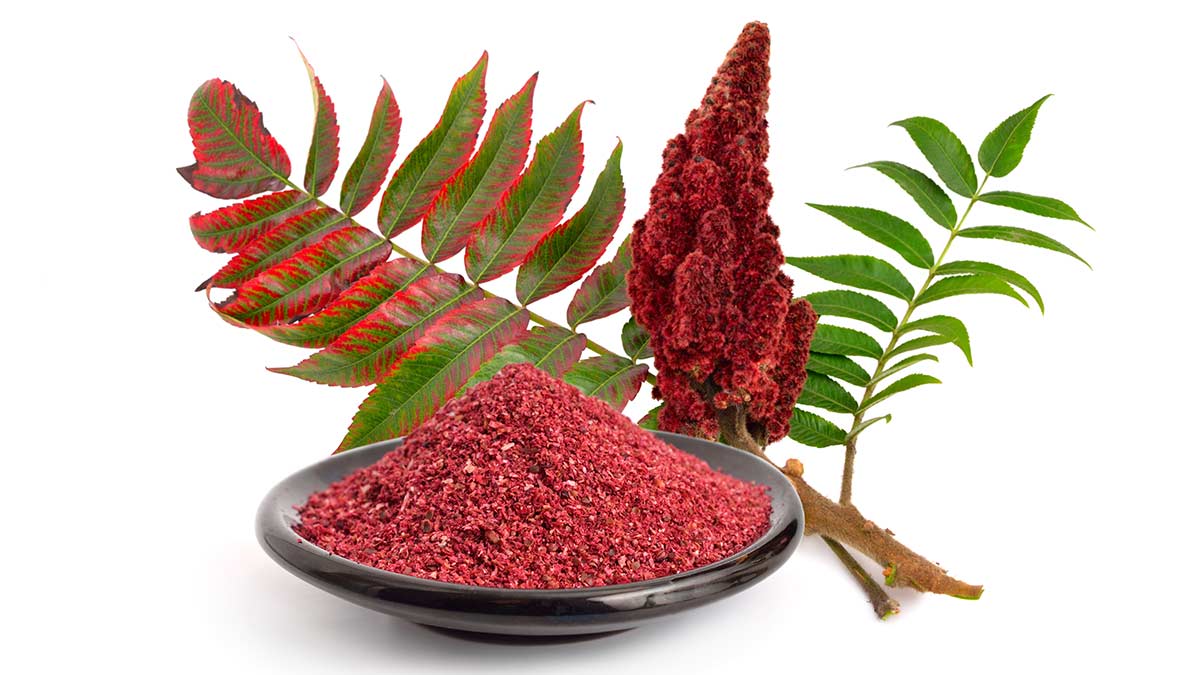If you have eaten any traditional Middle Eastern dishes, you may have come across a dark red powder that dusts a number of these dishes, including everything from salads to meat. This powder is Sumac, a spice that carries a lemony flavour but not quite as sour and a milder fruity profile that balances out its acidity.
Sumac is harvested from the fruit of the sumac flower, a member of the cashew family. Although prevalent in Middle Eastern cooking, the plant is primarily grown in temperate and subtropical areas of Africa and North America. It can also be found cultivating in places like Turkey and Iran, and also as a wild bush that primarily grows across the Mediterranean region, stretching from Italy to Greece to Lebanon. It is however worth noting that there are several varieties of the sumac brush and not all are edible. The berries of the culinary variety are safe and easily identifiable by their vibrant red berries. The poisonous ones are identified from their white berries and flowers that droop instead of standing straight.

Harvesting and processing of Sumac is a relatively straightforward process. The berries, once fully ripe, are harvested, dried, and ground into a coarse powder that takes on a deep red colour and has the texture of ground nuts. This is sold as the Sumac powder we are familiar with. The berries are also available whole, but this practice is far less common.
Although the exact place of origin of Sumac is unknown, it has been used for culinary as well as medicinal qualities for over 2,000 years across Europe, Africa, and the Middle East. Medicinally it was utilised as an astringent, antiseptic and tonic. Today its medical properties are far clearer. Sumac is a loaded with antioxidants known to prevent cancer, heart disease, and signs of aging. Studies have also shown that daily consumption of sumac can reduce the risk of cardiovascular disease in those with type 2 diabetes.

In cooking, Sumac is incredibly versatile. Its tart, lemony, almost vinegar-like flavour blends exceptionally well with other spices such as allspice, chili, thyme, and cumin. It is widely used as an acidulant in Arabic and Lebanese cooking and easily compliments the flavours of practically everything from hearty grilled meats, to fresh vegetables and delicate desserts. It is also sometimes used as a garnish, to add a touch of bold colour and slight acidity to a dish before serving. Whole berries on the other hand, need to be cracked or crushed slightly and soaked in water for approximately 20 minutes before adding to marinades, dips, or dressings, as you would the common ground version.

